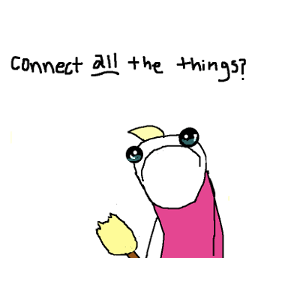IoT: A World-size Robot Out of Control

In an unrelated blogpost, renowned cybersecurity expert Bruce Schneier also warns against the dangers of insecure computer systems sprouting arms and legs. Only in his case, it’s not about individual robots. He likens the IoT itself to a world-size robot: a planet-spanning network with sensors, actuators and computer processing power.
Schneier: “You can think of the sensors as the eyes and ears of the internet. You can think of the actuators as the hands and feet of the internet. And you can think of [the computer processors] as the brain. We are building an internet that senses, thinks, and acts. This is the classic definition of a robot. We're building a world-size robot, and we don't even realize it.”
And this sprawling, distributed robotic creature isn’t secure. Not at all.
Broadly speaking there are three major stakeholders that should take an interest in having a secure IoT: consumers, industry and governments. Consumers because they shouldn’t want devices in their homes and businesses that spy on them or could even harm them. For the industry because if user trust evaporates, the market evaporates with it. And for governments because a secure infrastructure should be a top priority. None of these three stakeholders, however, seems to be very concerned with this issue at the moment. Consumers are largely unaware of the dangers, therefore they’re unwilling to pay extra for secure devices. If security isn’t a selling point, manufacturers will not invest in it. And governments spend far more time on legislation to expand their surveillance powers than making policy to secure the underlying infrastructure.
For now, it is mostly cybersecurity and internet experts sounding the alarm. Hopefully more people will start taking an interest sooner rather than later.
Images by Allie Brosh appearing in the comic This is Why I’ll Never be an Adult on Hyperbole and a Half. Copyright notice. The original text states: Clean All The Things.
Read full article
Hide full article


Discussion (0 comments)